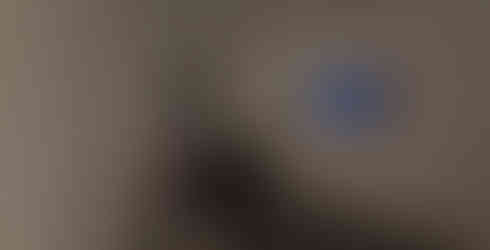Study week - studio work
- annabensky
- May 17, 2022
- 3 min read
Updated: May 19, 2022
Installation test
After discussing the 'chimera'/pōhutukawa assemblages last week and possible installation strategies, I decided to test out what they would look like on a screen. I believe this is an effective presentation option, and I intend on putting these images forward for critique next week to get some feedback on the idea.
Initially I thought displaying them in a darkened space would be more effective than an illuminated one. Comparing the images of the install below I think a bright space may work too, however a darkened space allows more detail in the image to show through - without it, the screen's pixelation is much more apparent. The trade-off though is that by turning the lights off, more attention is drawn to the TV itself. (Note: colour balance of the images below compared to the installation in person are quite different; photos for documentation only).
I'm tempted to see what multiple screens and sequences could look like together in the same space. I suspect multiple screens in the dark may work. If I develop more sequences, I will see what this looks like.
Thoughts
slide change too fast, need to find a way to slow it down; may be simpler to create a video sequence that can be looped (more control over duration perhaps?)
interesting effect when fading between images; greens are boosted momentarily, gives the appearance of algae growth on the surface of the objects
if working in a darkened room, will need to install a better light-blocking curtain (silhouette of viewer visible currently as the one we have up lets too much ambient light through)
After meeting with Noel:
Darkened space seems better, just need proper curtain to block light
Make into a video so pacing can be controlled better
Consider higher resolution screen in future, washing out a lot of the detail currently
Think about the lighting of the objects; some more 3D than others; more ”plausible” as objects, a bit like asteroids or moon rocks
Projection washes the images out too much and makes them feel ungrounded; TV screen situates the work better; be mindful of the language of the technology (i.e., screen-saver aesthetic and kitsch
consider placement of screen/s for future work (doesn't need to be at eye level, could be placed anywhere in the space; also be mindful of placing directly under light (as it is currently - very harsh lighting)
Out of curiosity, I also tried projecting the image sequence - I think there is some success; I can't help but wonder what a multichannel projection installation could look like, if the images continued to fade in and out across the sequence (thinking back on Bobbie Gray's Digital Garden, 2017). I still love the sense of scale that becomes apparent between viewer and subject through projection, but this may not be the most successful exhibition option for this particular work and its format.
I also tested the bouquet image on the screen, but I don't think it worked well - the screen washed out lot of detail and left the work looking very 'video-game-esque' (too flat, low poly, low res, high saturation, etc).
Iris Fisher application - artist statement
My current studio practice is an investigation into mediation, ecology, and the perception of the natural world. The conceptualization of nature within an Anthropocentric society and the role of digital technology in this process are recurring themes in my work at present, and I am interested in exploring how technology can foster a sense of curiosity and interconnectedness with the world we live in. The slippage of meaning that occurs when trying to accurately capture something through a digital device is a core interest in my practice.
This year I have been primarily working with 3D modelling and scanning and moving image installation. At present I am seeking to use the camera as a tool for viewing the natural world and to highlight the lens of technology as a means of facilitating alternative perspectives and viewpoints. I am interested in the way that imagery is captured, and how it is at times less adequate than a first-hand experience of nature while simultaneously being able to provide viewers with an encounter that is more than one. This is something I believe may help evoke a greater sense of consideration for the natural world and bring attention to the relationship between ourselves and the ecologies we are part of.
In my most recent works, I have been exploring the minute complexities, agency and importance of ecologies we are a part of and that may otherwise be overlooked. In exploring the micro-ecologies that exist around us – particularly those in proximity to domestic and urbanized spaces - I hope to examine anthropocentric perceptions of nature, non-human relationships, and the ability of technology to capture, mediate, and speculate about the natural world.



















Comments